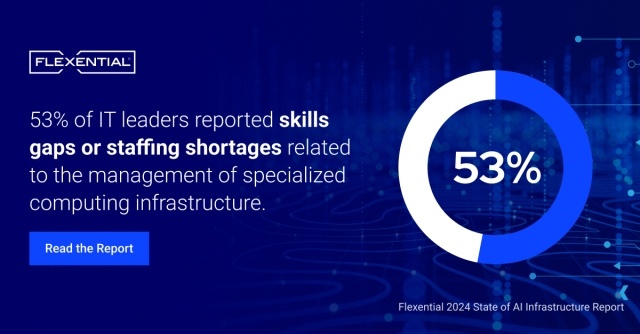Empowering digital transformation: A guide to network modernization
Staying ahead of technological advancements is essential for businesses to remain competitive, and one effective way to do so is through network modernization.

This involves upgrading and optimizing your existing network infrastructure to meet the demands of today's digital age. As businesses increasingly rely on cloud services, high-speed connectivity, and complex applications, modernizing network infrastructure has become a strategic necessity.
Network modernization adopts technologies like SDN, NFV, and SASE to enhance performance, boost flexibility, and support digital transformation. It’s about more than just technology; it secures networks, improves efficiency, and ensures a seamless user experience.
By modernizing their networks, organizations can better adapt to changing business requirements, reduce operational costs, and enhance the overall user experience. Whether it’s meeting the demands of a growing remote workforce or ensuring robust cybersecurity measures, network modernization is a critical step towards future-proofing a business and maintaining a competitive advantage.
Importance of network modernization
As organizations strive to meet their goals, whether it's improving customer experiences, driving innovation, or expanding into new markets, a modernized network becomes an essential foundation.
A key aspect of network modernization is its ability to align network infrastructure with business objectives. By upgrading their networks, organizations can effectively integrate advanced technologies like cloud computing, big data, and IoT, enhancing operational efficiency, improving service delivery, and unlocking new revenue streams. Additionally, modern networks are built to be more resilient and secure, ensuring the protection of sensitive data and compliance with industry regulations.
As technologies like 5G, edge computing, and AI continue to evolve, modernized networks provide the necessary flexibility to support these advancements, allowing businesses to scale operations quickly and respond to market changes.
Key benefits of network modernization
Network modernization offers a wide range of benefits that can significantly enhance an organization’s ability to operate efficiently, securely, and cost-effectively.
Addressing legacy infrastructure
One of the primary benefits of network modernization is updating and optimizing legacy infrastructure, as many organizations still rely on outdated network systems that were not designed to handle the demands of today’s digital applications and services. Modernization efforts focus on replacing or upgrading these old systems with new, more robust technologies, allowing businesses to eliminate bottlenecks, reduce downtime, and improve overall performance.
Scalability improvements
As businesses grow and their network demands increase, scalability becomes a critical concern. Modern network technologies like software-defined networking (SDN) and network function virtualization (NFV) enable organizations to scale their network resources more effectively to meet changing needs.
Enhanced security and reliability
Network modernization enhances security by integrating advanced security protocols and technologies, such as secure access service edge (SASE) and zero-trust architectures. These innovations offer enhanced protection against unauthorized access, data breaches, and other security threats, while built-in redundancies and failover mechanisms ensure uninterrupted operation, even during hardware failures or cyberattacks.
Operational efficiency
By adopting technologies that automate network management and monitoring, businesses can reduce the manual effort required to maintain their networks. This not only decreases the likelihood of human error but also frees up IT staff to focus on more strategic initiatives.
Long-term cost savings
While the initial investment in network modernization can be substantial, the long-term cost savings are often significant. Modern networks are more energy-efficient, reducing power consumption and lowering utility costs. Additionally, by consolidating and virtualizing network functions, businesses can reduce the need for expensive hardware and maintenance. Over time, the operational efficiencies gained through automation and improved management also contribute to lower total costs of ownership.
Future-proofing and sustainability
Modern networks are built to be adaptable and scalable, allowing businesses to seamlessly integrate emerging technologies like artificial intelligence, machine learning, and edge computing. This future-proofing ensures that your network infrastructure will continue to support business growth and technological advancements for years to come. Additionally, by adopting sustainable practices and energy-efficient technologies, organizations can minimize their environmental impact, aligning with long-term sustainability goals.
Challenges of network modernization
While the benefits of network modernization are significant, the process is not without its challenges. Organizations must navigate several obstacles to successfully upgrade their network infrastructure, including:
Tool integration and compatibility
Legacy systems may not be fully compatible with modern tools like software-defined networking (SDN) or network function virtualization (NFV), leading to potential interoperability issues. This can complicate the modernization process, requiring careful planning and possibly custom solutions to ensure all components work seamlessly together.
Complexity and initial costs
Modernizing a network can be daunting, as the process often involves a complete overhaul of existing infrastructure, which can be both time-consuming and costly. Initial costs include not only the purchase of new hardware and software but also the expenses related to training staff and potentially hiring external consultants. While these investments can lead to significant long-term savings, the upfront costs can be a significant barrier for many organizations.
Skills gaps
A major challenge highlighted in our 2024 State of AI Infrastructure Report is the skills gap related to specialized infrastructure management. Over half of the respondents (53%) reported skills gaps in managing high-density computing infrastructure, and 47% identified challenges related to managing advanced networking technologies like SDN and NFV. These gaps can slow down the modernization process, with organizations having to rely on external expertise or extensive training programs to build the necessary in-house capabilities.
Change management and disruption
Implementing new technologies and processes often requires significant changes to existing workflows, which can lead to resistance from employees accustomed to the old systems. Effective change management is crucial to mitigate these disruptions. Organizations must communicate clearly about the benefits of modernization, provide adequate training, and support staff throughout the transition to minimize resistance and ensure a smooth implementation.
Building the right network modernization plan
Developing a successful network modernization plan begins with a clear understanding of your organization’s network requirements and strategic goals. This initial step involves a thorough assessment of your current network infrastructure, including identifying any limitations or bottlenecks that could hinder future growth.
Once the requirements and goals are clearly defined, organizations can craft a network modernization strategy that is customized to their specific needs. A tailored strategy also allows for better allocation of resources, ensuring that investments are made where they will have the most significant impact.
Taking a holistic view of the network is essential during this planning phase. Network modernization is not just about upgrading individual components; it’s about understanding how all parts of the network interact and how changes in one area may affect others. This perspective helps in designing a network that is not only modern and efficient but also integrated and cohesive. Specialized skills are often required to fully grasp the complexities of modern network architectures, and organizations need to ensure that their IT teams have the necessary expertise or consider bringing in external specialists to bridge any skills gaps.
Consulting services can also play a pivotal role in the planning process. Experienced consultants bring a wealth of knowledge and can provide valuable insights into best practices, potential pitfalls, and the latest technological trends, and can also assist in the implementation phase, helping to minimize disruption and ensure a smooth transition to the new network infrastructure.
Choosing the right network modernization approach
Choosing the right approach to network modernization is essential for achieving successful outcomes, and various technologies and strategies offer unique benefits and considerations. Here are some key approaches organizations should consider.
Software-Defined Networking (SDN)
Software-Defined Networking (SDN) is a pivotal technology for network modernization, enabling organizations to improve network management and reduce costs by decoupling the control plane from the data plane, allowing for more centralized and flexible management of the network. SDN provides a programmable network architecture that can be easily managed and orchestrated, making it an ideal solution for businesses looking to enhance their network's agility.
One of the primary advantages of SDN is its ability to improve network performance, security, and scalability. By offering more granular control over network traffic and resources, SDN allows organizations to dynamically adjust network configurations in real time to meet changing business needs.
Secure Access Service Edge (SASE) considerations
SASE is a cloud-native framework that combines network security functions with wide area networking (WAN) capabilities to securely connect users and devices to applications and data, regardless of location. It enables organizations to improve network security, reduce costs, and enhance user experience by integrating security and networking into a single, cloud-delivered service.
This approach is particularly beneficial for businesses with distributed workforces or those that rely heavily on cloud-based applications. SASE plays a vital role in protecting sensitive data and ensuring secure access to network resources, so organizations looking to secure their networks and protect their data should consider SASE as a fundamental element of their strategy.
Addressing complexity and interoperability
Network modernization often involves integrating new technologies with existing infrastructure, which can be complex and challenging. All components of the network—both old and new—need to work together seamlessly, which requires a deep understanding of network architecture and functions.
By focusing on interoperability, businesses can create a more cohesive and efficient network environment that supports long-term growth and adaptability.
Ensuring network infrastructure sustainability
Sustainable network architecture is not only more energy-efficient but also easier to manage and orchestrate over time. This involves designing networks that can scale efficiently and incorporate energy-saving technologies, reducing the overall carbon footprint of the organization.
A sustainable network infrastructure improves network performance, security, and scalability, while also supporting the organization’s broader environmental goals and corporate responsibility objectives.
Preparing for future growth and innovation
Finally, a successful network modernization strategy must be forward-looking, with a focus on preparing for future growth and innovation. This involves continuously monitoring emerging technologies, such as AI and machine learning, and understanding how they can be integrated into the network to drive business value.
As these technologies evolve, they will place new demands on network infrastructure. Organizations that are proactive in their network modernization efforts will be better equipped to adapt to these changes and capitalize on new opportunities.
Moving ahead
Network modernization is essential for organizations to stay competitive. By updating their network infrastructure and adopting technologies like SDN and SASE, businesses can boost performance, enhance security, and ensure scalability for future needs.
For organizations ready to take the next step in their network modernization journey, explore Flexential high-performance compute and high-density interconnection services that can help you achieve your goals.





